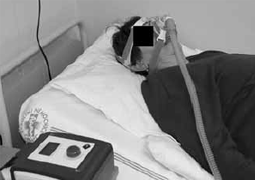Floppy eyelid syndrome (FES) is a relatively rare condition of unknown aetiology, commonly described in association with other systemic conditions, particularly with obstructive sleep apnoea – OSA (the most frequent and most significant sleep-related breathing disorder in terms of morbidity and mortality). It is characterized by an extremely enlarged and floppy upper eyelid which can be very easily everted (often spontaneously during sleep). The laterality of the disease corresponds to the side the patient sleeps on. The patient may also present with upper lid ptosis, lash ptosis or trichiasis, lower lid ectropion, chronic papillary conjunctivitis, and chronic corneal disorders. The aim of this study is to report this syndrome, which is often overlooked in eye clinics, and to summarize our experience with its diagnosis and treatment. The correct and early diagnosis of FES
- Gases in Vitreoretinal Surgery
- The Incidence of Refractive Errors with Subsequent Selection of Corrective Aids
- Our Fifteen-Year Experience with Lasik
- Floppy Eyelid Syndrome and Obstructive Sleep Apnoea
- Effects of Intravitreal Pegaptanib or Bevacizumab and Laser in Treatment of Threshold Retinopathy of Prematurity in Zone I and Posterior Zone II – Four Years Results
- Selected Prognostic Factors of Malignant Uveal Melanoma
- Comparative Study of Intraocular Pressure Measurements by Goldmann Applanation Tonometer, Noncontact Tonometer and TonoPen

